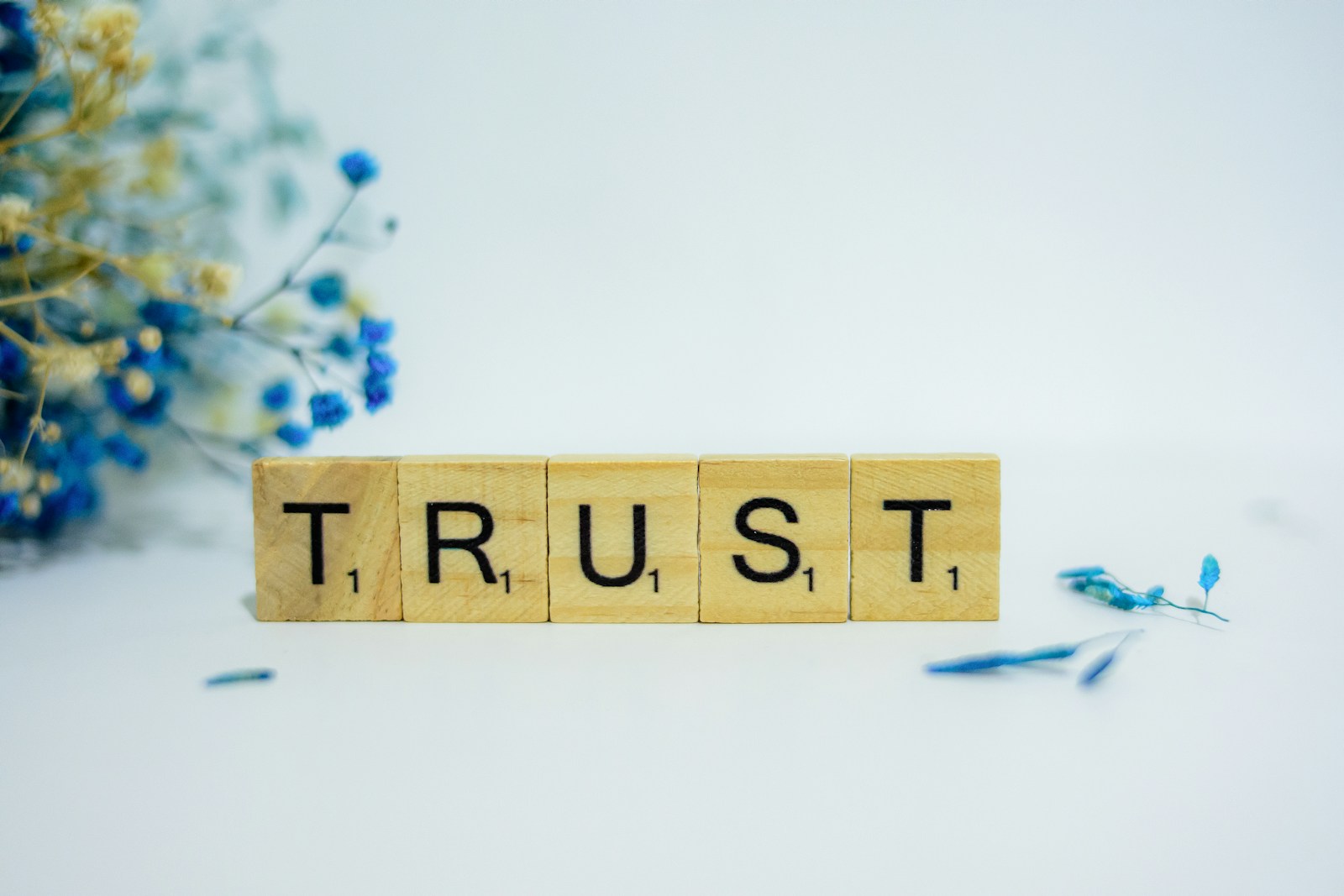Building and maintaining trust is a nuanced art that involves a range of behaviors, each contributing uniquely to strong relationships. Honesty and transparency are vital, but there are several other dimensions worth exploring. Let’s delve deeper into how these behaviors can be practiced effectively and look at some common pitfalls to avoid. Honesty and transparency are the bedrocks of trust. Imagine working on a team project where one member consistently withholds critical information. This behavior breeds suspicion and distrust among team members. Instead, practice open communication. Share relevant details promptly and ensure everyone is on the same page. For instance, in a family setting, being upfront about financial matters can prevent misunderstandings down the road. A practical tip is to create an environment where people feel safe to express their thoughts without fear of judgment. This approach not only fosters transparency but also promotes a culture of openness and mutual respect.
Consistency
Consistency might seem straightforward, but it’s often where many falter. Picture a friend who frequently cancels plans last minute. Over time, this erodes trust. To be consistent, make commitments you can keep. If you’re unsure about your availability, communicate this clearly rather than overcommitting. Consider a scenario where a manager regularly shifts deadlines without explanation. This unpredictability can frustrate team members and diminish their trust. Consistency in leadership, whether in setting clear expectations or adhering to agreed timelines, reinforces reliability and trustworthiness.
Practical Tips for Consistency:
- Set Clear Expectations: Clearly outline what is expected in any given situation. Whether it’s a work project or a social engagement, clarity prevents misunderstandings.
- Create Reminders: Use digital calendars or reminders to keep track of commitments. This helps in planning effectively and avoiding last-minute cancellations.
- Regular Check-ins: Establish a routine of checking in with people involved in your commitments. This helps to align expectations and adjust plans if needed.
Respect
Respect is foundational to trust, yet it’s sometimes undervalued in its subtlety. It’s not just about agreeing but valuing differing opinions and perspectives. For example, in a multicultural workplace, acknowledging and respecting cultural differences can enhance team cohesion. Avoid dismissive language or actions. Instead, practice active listening. Show genuine interest in others’ viewpoints. This doesn’t mean you have to agree with everything, but being open to dialogue fosters a respectful and trusting environment.
Examples of Demonstrating Respect:
- Cultural Acknowledgment: In meetings, recognize cultural holidays or practices of team members from diverse backgrounds. This not only shows respect but also fosters inclusivity.
- Feedback Reception: When receiving feedback, listen attentively and thank the person for their input, even if you disagree. This shows that you value their perspective.
Reliability
Reliability is more than just showing up; it’s about being dependable in every aspect. Think of a colleague who always meets deadlines and delivers quality work. This person becomes a go-to resource, their reliability earning them trust and respect. To cultivate reliability, set realistic goals and manage your time effectively. If unexpected circumstances arise, communicate promptly and offer solutions. Reliability isn’t about perfection—it’s about being dependable and transparent about your capabilities and limitations.
Steps to Enhance Reliability:
- Prioritize Tasks: Use a task management system to prioritize and track progress effectively. This helps in meeting deadlines consistently.
- Communicate Proactively: If delays or issues arise, communicate them as soon as possible. Offering alternative solutions can mitigate potential frustrations.
Empathy
Empathy is a powerful trust builder. It involves stepping into others’ shoes and understanding their emotions. For instance, if a team member is struggling with a personal issue, showing empathy by offering support or adjusting workloads can strengthen trust. Avoid dismissing feelings or being apathetic. Practice empathetic listening by acknowledging emotions and offering comfort. This approach can transform relationships, creating deep bonds rooted in understanding and compassion.
Developing Empathy:
- Active Listening: Focus on listening without interrupting. Reflect back what you’ve heard to ensure understanding.
- Emotional Validation: Acknowledge others’ feelings, even if you don’t fully understand them. Statements like “I can see this is really important to you” can validate their emotions.
Accountability
Accountability means owning your actions and their consequences. Picture a leader who makes a mistake and immediately blames subordinates. This deflection undermines trust. Instead, embrace accountability by acknowledging errors and taking corrective action. A practical step is to implement a feedback loop where both successes and failures are discussed openly. This transparency not only builds trust but also encourages a learning culture where everyone feels responsible for their contributions and outcomes.
Building Accountability:
- Set Personal Goals: Regularly review your own objectives and assess how well you are meeting them. Self-assessment is key to personal accountability.
- Encourage Team Accountability: Foster an environment where team members feel comfortable discussing mistakes and lessons learned without fear of reprisal.
Confidentiality
Confidentiality is crucial, especially in sensitive situations. Consider a friend who shares a personal secret only to find it discussed elsewhere. This breach of trust can be devastating. To maintain confidentiality, clarify the boundaries of information sharing at the outset. For example, in a professional setting, ensure that client data is protected and only shared on a need-to-know basis. Upholding confidentiality fosters trust, as others feel safe sharing information with you.
Practices to Ensure Confidentiality:
- Secure Information Storage: Use secure digital tools for storing sensitive information and ensure access is restricted to authorized individuals.
- Clear Privacy Policies: Whether in personal or professional contexts, make privacy expectations clear and adhere to them strictly.
Open Communication
Open communication is about more than just talking; it’s about creating a dialogue where ideas and concerns can be shared freely. In a relationship, for instance, regularly checking in with each other can prevent misunderstandings and build trust. Avoid being defensive or shutting down conversations. Instead, practice active listening and encourage open-ended questions. This strategy not only enhances communication but also builds a robust foundation of trust and mutual understanding.
Fostering Open Communication:
- Establish Regular Dialogue: Set aside time for regular meetings or conversations where open discussion is encouraged.
- Use Open-Ended Questions: Encourage deeper discussions by asking questions that invite elaboration, such as “What do you think about this approach?”
Integrity
Integrity is the alignment of values, words, and actions. Think of someone who always acts ethically, even when it’s inconvenient. This consistency builds trust over time. To practice integrity, establish a personal code of ethics and adhere to it, even under pressure. In business, for example, maintaining honesty in advertising and transparency in operations reflects integrity and builds consumer trust. Remember, integrity is not about being perfect but about striving to uphold moral principles consistently.
Cultivating Integrity:
- Define Your Values: Clearly outline your core values and refer to them when making decisions.
- Lead by Example: Demonstrate integrity in your actions to inspire others to follow suit.
Empowerment
Empowerment involves trusting others with responsibility and supporting their growth. Imagine a manager who delegates tasks and provides opportunities for team members to lead. This approach not only builds trust but also boosts team morale and performance. Avoid micromanaging or undermining others’ abilities. Instead, offer guidance and resources to help others succeed. By empowering others, you demonstrate trust in their capabilities, fostering a collaborative and trusting environment.
Strategies for Empowerment:
- Delegate Effectively: Assign tasks based on individual strengths and provide the necessary resources and support.
- Encourage Initiative: Foster an environment where team members feel encouraged to propose ideas and take the lead on projects.
Additional Insights and Tips
Self-awareness
Understand your strengths and weaknesses. Regular self-reflection can help you identify areas for improvement. For instance, if you notice a pattern of overpromising and underdelivering, work on setting more realistic expectations.
Improving Self-Awareness:
- Keep a Journal: Regularly document your thoughts, experiences, and reflections to gain insights into your behaviors and patterns.
- Seek Feedback: Actively ask for feedback from trusted peers to gain different perspectives on your strengths and areas for growth.
Feedback Culture
Encourage a culture of feedback where everyone feels comfortable sharing constructive criticism. This openness can enhance trust across teams and relationships. A practical tip is to schedule regular feedback sessions to discuss progress and areas for growth.
Creating a Feedback Culture:
- Model Openness: As a leader or team member, show openness to feedback and demonstrate how to use it for growth.
- Normalize Feedback Sessions: Regularly incorporate formal and informal feedback opportunities into team routines.
Conflict Resolution
Address conflicts directly and constructively. Avoid letting issues fester, as this can erode trust. Instead, approach conflicts with a problem-solving mindset, aiming to understand all perspectives and find mutual solutions.
Effective Conflict Resolution Techniques:
- Neutral Facilitation: In tense situations, employ a neutral party to facilitate discussions and mediate disputes.
- Focus on Solutions: Encourage all parties to focus on finding a resolution rather than assigning blame.
Flexibility and Adaptability
While consistency is key, so is the ability to adapt to changing circumstances. Show flexibility when needed, but ensure that any changes are communicated clearly to maintain trust.
Balancing Consistency and Flexibility:
- Communicate Changes: When adapting plans, communicate any changes clearly and promptly to all stakeholders.
- Prepare for Contingencies: Develop contingency plans to manage unexpected changes effectively.
Real-world Examples and Case Studies
Company X’s Transparency Initiative
Company X implemented a transparency policy where all team meetings are recorded and accessible to employees. This move increased trust within the organization, as employees felt more informed and involved in decision-making processes.
Lessons Learned:
- Enhanced Trust: Transparency in operations can significantly boost trust among employees, leading to increased morale and productivity.
- Informed Workforce: With access to information, employees can make better decisions and feel more engaged.
The Role of Empathy in Customer Service
A leading customer service firm trained its staff in empathy-driven communication, resulting in a significant increase in customer satisfaction and trust. By understanding and addressing customer emotions, the company built stronger customer relationships.
Impact of Empathy Training:
- Customer Loyalty: Empathetic interactions lead to enhanced customer loyalty and repeat business.
- Positive Reputation: Companies known for empathetic service often enjoy a stronger reputation and competitive advantage.
Integrity in Leadership
A study on leadership integrity found that teams led by managers who consistently demonstrated integrity had higher trust levels and were more productive. This highlights the importance of ethical leadership in fostering trust within teams.
Benefits of Integrity in Leadership:
- Increased Team Cohesion: Leaders with integrity inspire trust, leading to more cohesive and motivated teams.
- Sustainable Success: Ethical leadership practices contribute to long-term success and stability.
Common Mistakes to Avoid
Inconsistent Communication
Switching your stance or not following through on what you say can quickly erode trust. Strive for consistency and clarity in all your communications.
- Clear Messaging: Ensure your communications are clear and consistent across all channels.
- Follow Through: Always follow through on promises and commitments to maintain credibility.
Ignoring Feedback
Dismissing feedback or failing to act on it can make others feel undervalued. Show that you value input by acknowledging it and implementing changes when appropriate.
- Actively Listen: When receiving feedback, listen actively and consider how you can use it for improvement.
- Implement Changes: Demonstrating that feedback leads to tangible changes can reinforce trust.
Taking Trust for Granted
Trust is a dynamic element in relationships and requires ongoing effort. Regularly assess your actions and their impact on trust, making adjustments as needed.
- Regular Reassessment: Periodically evaluate your actions and their impact on trust within your relationships.
- Continuous Improvement: Commit to continuous improvement in your trust-building practices.
By embracing these behaviors with intention and mindfulness, you can cultivate trust in your personal and professional relationships, creating environments where collaboration and mutual respect thrive.




